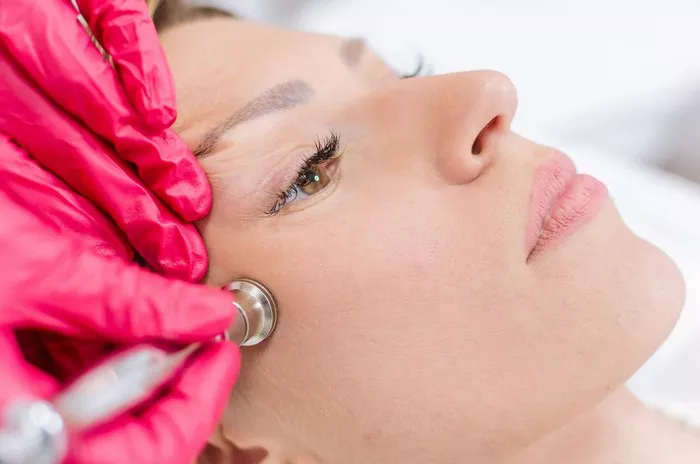Microdermabrasion is a popular non-invasive cosmetic procedure that aims to improve the appearance of the skin by exfoliating its outermost layer. One common concern among individuals seeking microdermabrasion treatment is whether it can effectively help reduce the appearance of pores. In this article, we will delve into the topic of pore size and explore the potential benefits of microdermabrasion in addressing this concern. We will examine the underlying mechanisms, scientific evidence, and provide tips on maximizing the effectiveness of microdermabrasion treatments.
1.Understanding Pores
Pores are tiny openings on the surface of the skin that allow oil, sweat, and other substances to be released. They are more prominent on areas such as the nose, forehead, and chin, which are prone to increased oil production. The size of pores is determined by various factors, including genetics, age, skin type, and environmental influences. While pore size cannot be permanently changed, certain treatments like microdermabrasion can help minimize their appearance.
2.How Microdermabrasion Works
Microdermabrasion involves the use of a handheld device that delivers fine crystals or a diamond-tipped wand to gently remove the top layer of dead skin cells. This mechanical exfoliation process stimulates cellular turnover, promoting the growth of new, healthier skin cells. By removing dead skin cells, microdermabrasion can potentially enhance the overall texture and clarity of the skin, which may lead to reduced pore visibility.
3.The Effect of Microdermabrasion on Pore Size
Scientific studies examining the direct effect of microdermabrasion on pore size are limited. However, anecdotal evidence and clinical observations suggest that regular microdermabrasion treatments can yield positive results in minimizing the appearance of pores. The exfoliation process helps to unclog pores by removing dirt, excess oil, and other impurities that can contribute to their enlargement. Additionally, the stimulation of collagen production induced by microdermabrasion can improve skin elasticity, potentially making pores appear smaller.
4.Scientific Evidence and Studies
While there is a lack of extensive scientific research specifically focused on microdermabrasion and its effects on pore size, several studies have investigated the broader impact of this treatment on the skin. A study published in the Journal of Dermatological Science found that patients who underwent multiple microdermabrasion sessions experienced improved skin texture, reduced fine lines, and diminished acne scars. While this study did not directly measure changes in pore size, it suggests that microdermabrasion may have positive effects on overall skin appearance.
5.Maximizing the Benefits of Microdermabrasion for Pores
To optimize the potential benefits of microdermabrasion in reducing the visibility of pores, incorporating certain strategies can be beneficial:
Consistency: Regular treatments spaced at appropriate intervals can help maintain the results achieved from microdermabrasion. Consult with a skincare professional to determine the recommended frequency based on your individual needs.
Skincare Routine: Complementing microdermabrasion with a consistent skincare routine that includes gentle cleansing, moisturizing, and sun protection will help support the overall health of your skin and enhance the outcomes of the treatment.
Professional Guidance: Seek advice from a qualified skincare professional or dermatologist before undergoing microdermabrasion. They can assess your skin condition, provide personalized recommendations, and ensure that the treatment is suitable for you.
6.Alternative Treatments for Pore Reduction
While microdermabrasion shows promise in minimizing the appearance of pores, it is important to note that it may not be the most effective or suitable treatment option for everyone. Alternative procedures such as chemical peels, laser resurfacing, and certain skincare products containing ingredients like retinoids or alpha hydroxy acids may also offer benefits in pore reduction. Consulting with a skincare professional will help determine the most appropriate course of action for your specific skin concerns.
Conclusion
Microdermabrasion can potentially help minimize the appearance of pores by exfoliating the skin’s surface, unclogging pores, and stimulating collagen production. Although scientific research specifically focused on pore size is limited, anecdotal evidence and clinical observations suggest positive results. To maximize the benefits of microdermabrasion, it is essential to follow a consistent skincare routine, seek professional guidance, and consider alternative treatments if necessary. Remember that individual results may vary, and consulting with a skincare professional or dermatologist will provide personalized advice based on your specific needs.


